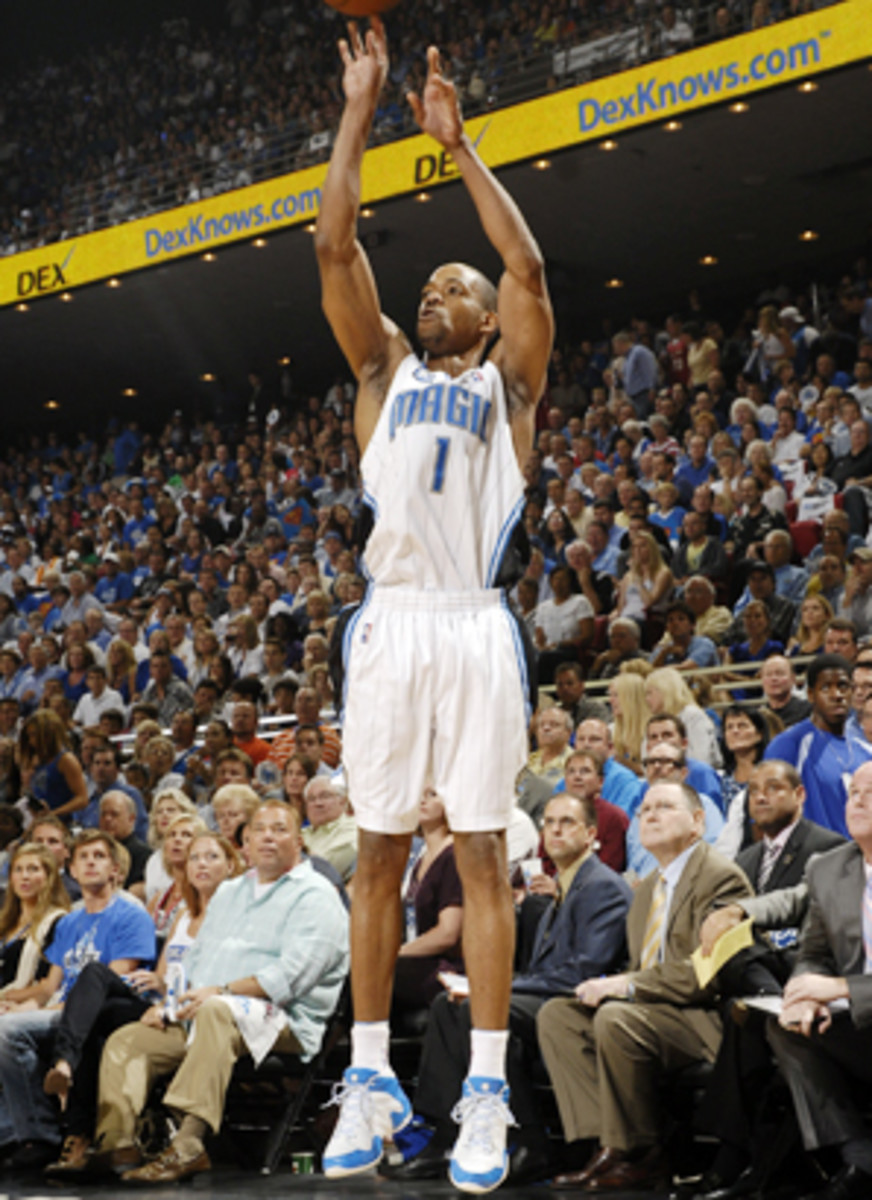In shadow of stars, supporting players may shine in NBA Finals
Since much of the discussion this week focuses on Kobe Bryant and his quest for his first ring UBS (that is, Unsullied By Shaq), Dwight Howard and his quest for divine intervention (the Christopher Hitchens rebuttal is sure to come any moment) and Lamar Odom and his quest for multiple cavities (Milk Duds are the new Myoplex), let's take a different tack for a moment and discuss Matt Maloney.
Perhaps you remember Matt (or more likely, perhaps you don't). Short-ish point guard, went to Penn. In six NBA seasons, Maloney averaged 7.4 points while playing for three teams in the late 1990s. There is nothing remarkable about his career, save perhaps the fact that he had one; undrafted, he did some time in the CBA before overachieving his way into the league. He played hard, could shoot a little, coaches loved him.
Maloney's relevant now because, for one postseason, he embodied the quintessential NBA playoff defensive gamble. The year was 1997 and Maloney was a rookie starting point guard for the Houston Rockets, a team that was stacked with three future Hall of Famers. Their starting five read: Barkley, Drexler, Olajuwon, Mario Elie and ... Maloney. It did not require a defensive guru to devise a strategy on how to play against Houston. So, game after game, teams would double down on Olajuwon and Barkley and lay off the kid from Penn. And we're not talking about "giving some space." Rather, on many sequences Maloney was so alone at the top of the key that he could have done a full Karl Malone free-throw routine -- dribbling, spinning the ball, muttering to himself -- and still had time to launch that open three. It made sense, of course. Why let Barkley, Drexler and Olajuown beat you when you could dare Maloney to do it?
In Maloney's case, it mostly backfired. In 16 playoff games, Maloney launched 108 threes and made 43 of them (that's over 40 percent), more than any player did over the course of those playoffs. In one game against the Sonics in the Western Conference semifinals, Maloney dropped in eight threes.
"I'm not amazed at what he's doing," a peeved Gary Payton said at the time. "He can shoot the ball, but I think with pressure on him, it would make it a lot harder. But right now, there is no pressure on him. ... You get wide-open looks like that, you should knock them down."
Sound familiar? On the surface, there isn't a great resemblance between Maloney and Magic point guard Rafer Alston, but don't be surprised if Alston gets the Maloney treatment during these Finals. He certainly got it from the Cavs, who let Alston fire at will. Of course, they had no inkling a career 35.4 percent three-point shooter would suddenly morph into Reggie Miller, as Alston did when he nailed 6-of-12 threes in Game 4 of the East finals. But again, what would you rather live with defensively: Howard going against single coverage in the post, Hedo Turkoglu on the pick-and-roll, Rashard Lewis spotting up or Alston jacking threes? Yes, that's what Cavs coach Mike Brown thought, too. (Interestingly, if you're going to let Alston shoot, the numbers suggest you do so from anywhere except the top of the key; according to the ever-useful Hot Spots feature on NBA.com, Alston shot 42 percent on top-of-the key threes this season but 31.0 and 32.4 percent, respectively, from the wings. Then again, if you're going to leave a guy wide open, it's not easy to dictate where he is).
Alston's not alone in these Finals as a candidate for the "self-check" treatment (that is, there's no reason to "check" him on the perimeter because he already does a fine job of that himself). I can see Luke Walton having all the time he wants to square up on threes (from the left wing and baseline, he shot only 6-of-29 from beyond the arc this season). Same might go for Jordan Farmar, mired in such a slump that he looked petrified of the ball by the end of the Nuggets series. And if the Magic think like the Rockets, the Lakers' second-round opponent, Pau Gasol might even find himself with plenty of room. The Rockets' numbers told them that a Gasol mid-range shot was one of the Lakers' least-efficient options, which is why you saw him presented with so many open ones. (With good reason; for the season Gasol shot 40.6 percent from 17 feet out to the three-point line, according to Synergy Sports.)
Then, of course, there is the most important dare of all: Dwight Howard from 15 feet, clock stopped, unguarded. The Cavs gambled and put Howard on the line and he responded by converting 70.1 percent in the series, or more than 10 percent better than during the regular season (that's about eight extra points the Magic got over the course of the series).
It'll be interesting to see if Phil Jackson does the same. He's already noted that he has "three big guys with solid bodies" to play against Howard, which sounds like we're in for some quality D.J. Mbenga time (and who hasn't been eagerly awaiting it?). I'd put Mbenga's over/under at a foul every two minutes of PT.
The other option, of course, is to play everyone straight up, but as long as Kobe and Dwight are on the floor, that's unlikely to happen. Which means someone will get a chance to play the role of Matt Maloney. If, that is, they're up for it.






